Vegetation in all habitats on Cousin has been left to regenerate naturally, although on the plateau the once dominating coconut trees have been gradually removed to make space for native woodland species. The changes in the vegetation of the different habitats is monitored to assess the impact of this transformation on the animals are dependent on them.
BEACH MORNING GLORY
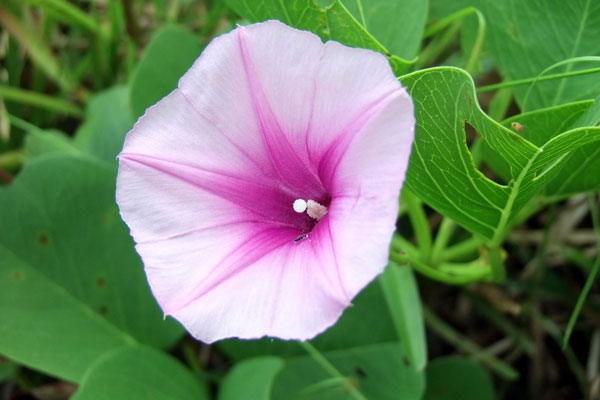
Beach morning glory / Patatran / Ipomoea pes-caprae
This hardy ground creeper is common on the beach fringes throughout the Indian Ocean islands. It’s lovely large pink flowers typical of the morning glory family are offset nicely by the vivid green succulent waxy leaves. Well adapted against the rigours of salt spray, wind and occasional soaking by a high tide wave, this creeper plays an important role in the protection of the dune against coastal erosion.
PISONIA
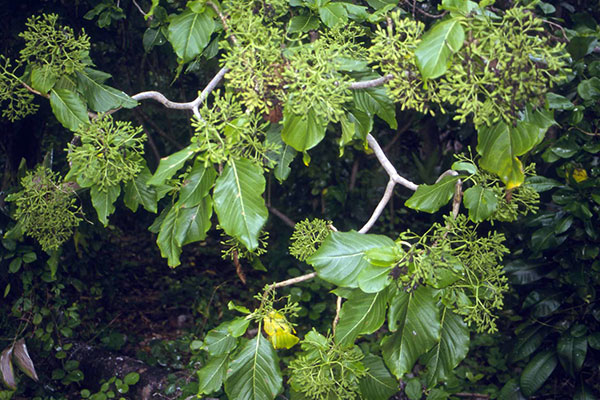
Pisonia / Pisonia grandis
Generally uncommon on most islands in Seychelles, the Pisonia is common on Cousin as on other seabird islands. The sticky seeds are dispersed by clinging to the birds’ feathers, an adaptation which leads to some bird fatalities. The leaves host a variety of insects eaten by the Seychelles warbler, and are used by Lesser noddies as nesting material.
coconut
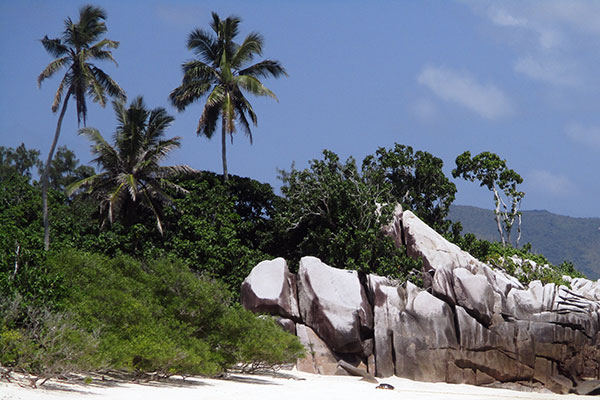
Coconut / Koko / Cocos nicifera
Under natural conditions, coconut trees are normally found fringing the coast, where the nuts are dispersed by the sea. Coconut trees are popular nesting sites of the Brown noddy during the South-East monsoon season. Coconut trees planted on Cousin’s plateau have gradually been replaced by native inland species.
casuarina
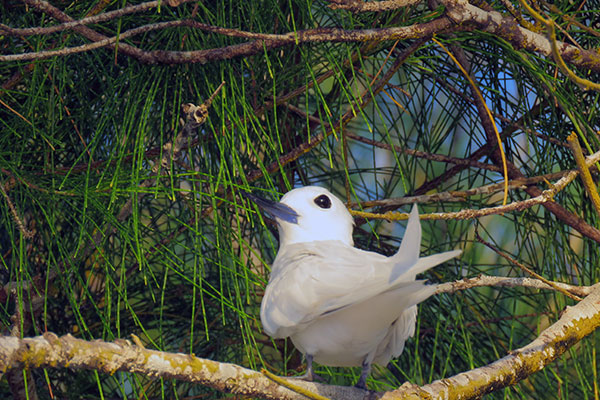
Casuarina / Pye sed / Casuarina equisetifolia
These graceful, wispy trees fringing the coast provide valuable food and nesting sites for a number of bird species, as well as form a barrier to shelter inland species from slat spray and wind. They are believed to be a native species. They are favourite roosting sites for Bridled terns and small numbers of Frigatebirds.
Noni
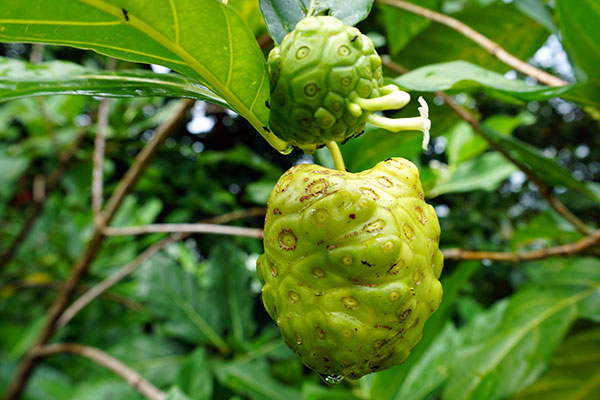
Noni / Indian Mulberry / Bwa torti / Morinda citrifolia
Believed to be a native species, Indian mulberry trees are common throughout the plateau. Tortoises commonly feed on the soft, smelly fruits, which many claim smell like an over-ripe cheese! The flowers provide nectar for Sunbirds and Fodies.
Ochrosia
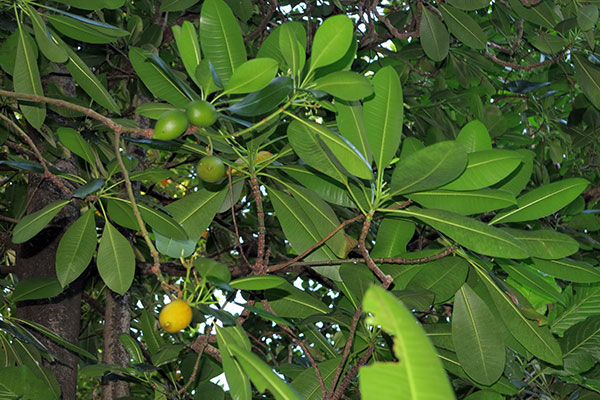
Ochrosia / Fruit bat tree / Bwa sousouri / Ochrosia oppositifolia
Found in dense forest, these trees produce smooth mango-shaped fruits that are often consumed by visiting fruit bats from Praslin. The dried fibrous seeds can be seen in many places strewn along the forest floor.
banyan
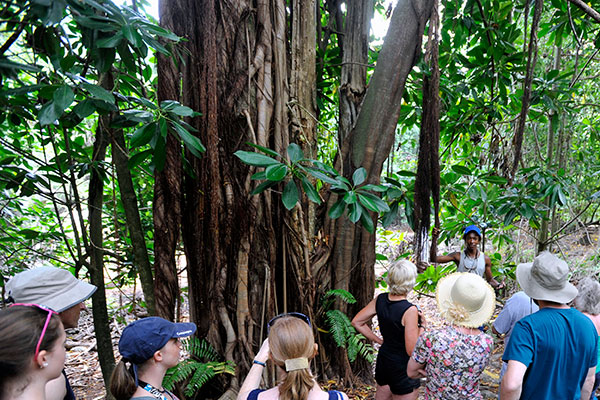
Banyan / Lafous / Ficus reflexa
These large trees belonging to the fig family are easily identified by the masses of aerial roots hanging from the branches to the forest floor. There are three native species present on Cousin, and their fruits are an important food source for resident birds such as the Malagasy turtle dove and the Seychelles blue pigeon, as well as for visiting fruit bats.
mangroves
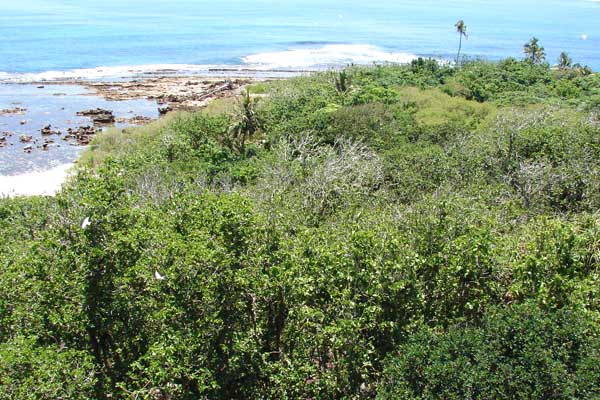
Mangrove / Mangliye / Avicennia marina
There are two mangrove species on the island but this one is more common and dominates the small mangrove swamp located at Anse Frégate. Besides providing a habitat for a number of animals and other plants, mangroves play an important ecological role filtering river water thereby removing soil sediment and pollutants before they reach the sea. They also provide a sheltered nursing ground for the young of a number of coral reef animals.

